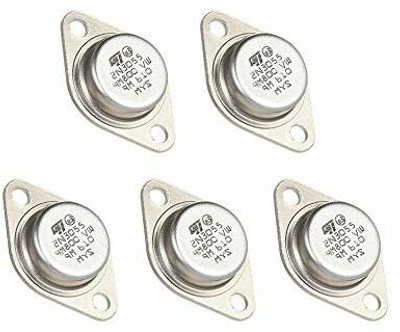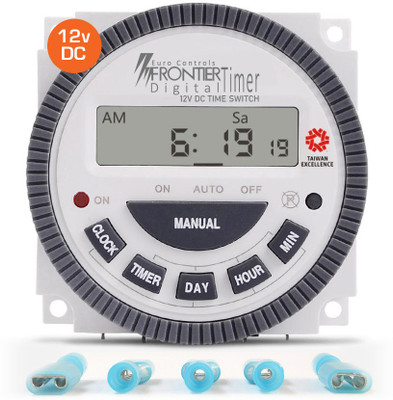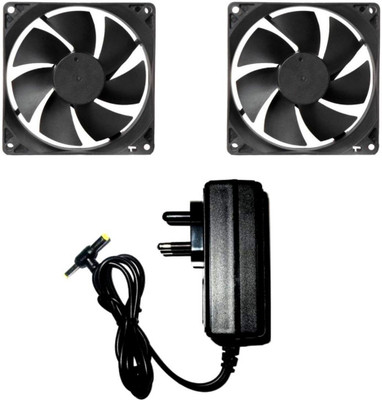
jivith ATTINY85 USB Development Board Micro Controller Board Electronic Hobby Kit
Share
jivith ATTINY85 USB Development Board Micro Controller Board Electronic Hobby Kit
4
30 Ratings & 2 ReviewsSpecial price
₹453
₹800
43% off
Available offers
T&C
T&C
T&C
Delivery
Check
Enter pincode
Delivery by1 Jul, Tuesday
?
if ordered before 5:59 PM
View Details
Highlights
- Power Source: DC
- RoHS Compliant
- Material: Fiber Glass
- Weight: 50
Services
- Cash on Delivery available?
Seller
Description
Okay, here are bullet points highlighting features and aspects of a USB ATtiny85 development board, categorized for clarity:
**General Features:**
* **Compact Size:** Small form factor, often designed for portability and embedding in projects.
* **USB Interface:** Direct USB connection for programming and communication. Eliminates the need for external programmers (often).
* **ATtiny85 Microcontroller:** Based on the popular and versatile ATtiny85 AVR microcontroller.
* **Breadboard-Friendly:** Designed to easily plug into standard breadboards for prototyping.
* **Pre-soldered Components:** Typically comes with all necessary components pre-soldered for immediate use.
* **Open Source:** Schematics and software examples often available.
* **Low Power Consumption:** Suitable for battery-powered applications.
**Programming & Development:**
* **USB Programming:** Program the ATtiny85 directly via the USB interface (often using a bootloader).
* **Arduino IDE Compatible:** Often supports programming using the Arduino IDE with appropriate board definitions.
* **Bootloader Pre-installed:** May come with a pre-installed bootloader (e.g., Micronucleus) for easy programming.
* **ISP Header:** May include an In-System Programming (ISP) header for alternative programming methods (using an external programmer if needed).
* **Example Code Available:** Tutorials and example code readily available online.
**I/O & Connectivity:**
* **Digital I/O Pins:** Provides access to the digital I/O pins of the ATtiny85.
* **Analog Input Pins:** Includes analog input pins for reading analog signals (e.g., sensors).
* **PWM Outputs:** Supports Pulse-Width Modulation (PWM) outputs for controlling motors, LEDs, etc.
* **Reset Button:** Typically includes a reset button for restarting the microcontroller.
* **LED Indicator:** Often includes an LED for general purpose indication or debugging.
* **Voltage Regulator:** Onboard voltage regulator to provide stable power to the ATtiny85.
**Power:**
* **USB Powered:** Typically powered directly from the USB connection.
* **External Power Option:** May have pads or connections for external power supply if desired.
**Advantages:**
* **Cost-Effective:** Relatively inexpensive compared to larger development boards.
* **Easy to Use:** Simplified development process, especially with Arduino IDE support.
* **Ideal for Small Projects:** Perfect for simple projects, wearables, and embedded systems.
* **Rapid Prototyping:** Quickly test and iterate on your ideas.
**Considerations:**
* **Limited Resources:** ATtiny85 has limited memory and I/O pins compared to larger microcontrollers.
* **Debugging Challenges:** Debugging can be more challenging than with boards that have built-in debuggers.
* **Bootloader Overhead:** Bootloaders consume some flash memory.
* **Pin Mapping:** Pay close attention to the pin mapping between the ATtiny85 and the board's connectors.
This comprehensive list should provide you with a solid understanding of the key features and considerations for USB ATtiny85 development boards. Remember to check the specific specifications of the board you are considering, as features may vary slightly between different models.
Read More
Specifications
In The Box
|
General
| brand |
|
| Model Number |
|
| Type |
|
| ROHS Complaint |
|
| Material |
|
Dimensions
| Width |
|
| Height |
|
| Weight |
|
Power Features
| Battery Type |
|
| No Of Batteries |
|
| Battery Size |
|
| Power Source |
|
| Other Power Features |
|
Be the first to ask about this product
Safe and Secure Payments.Easy returns.100% Authentic products.
Back to top






